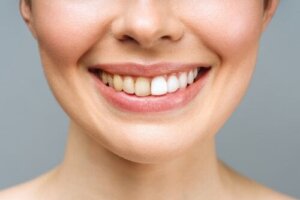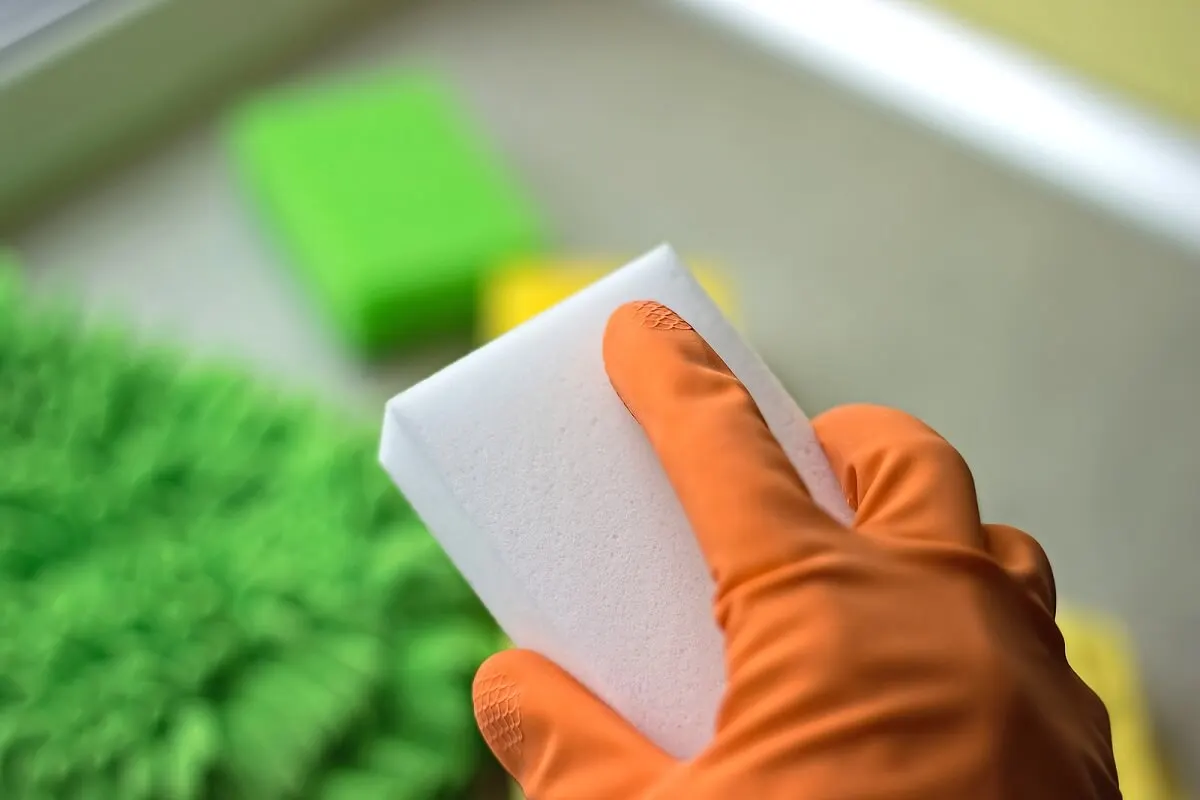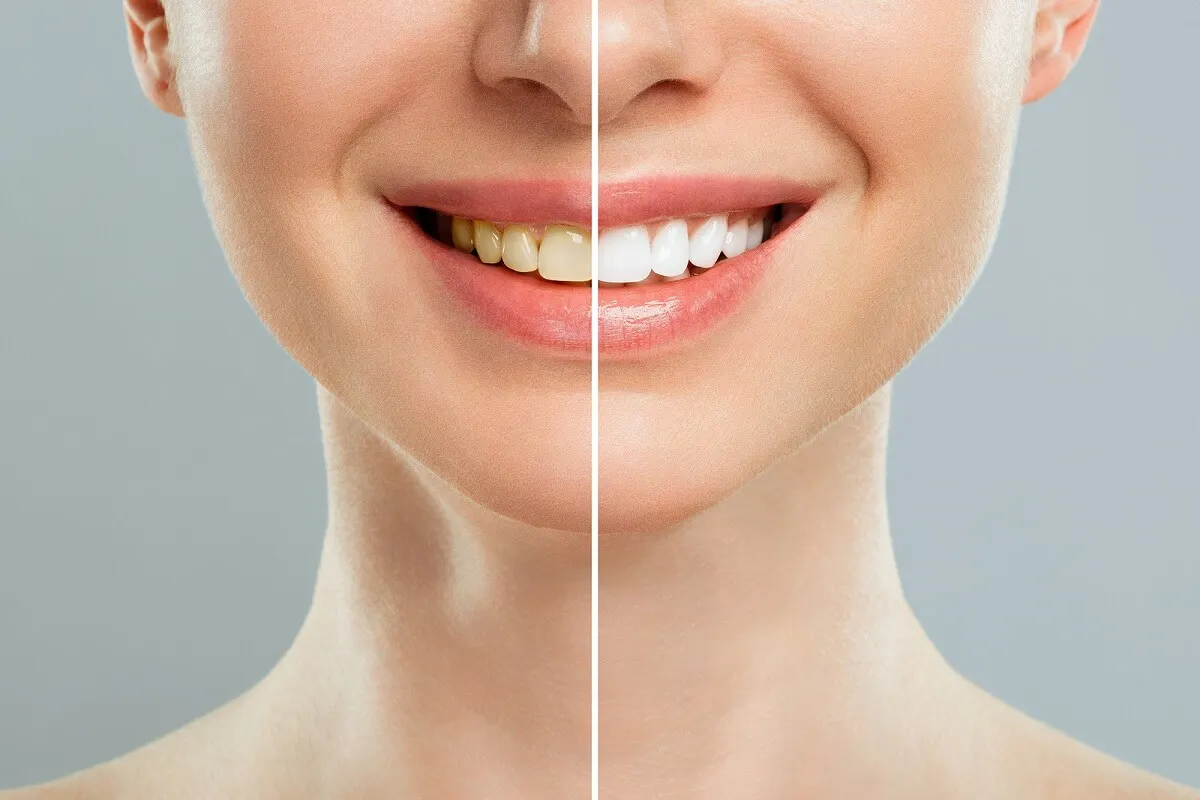New TikTok Challenge Puts Dental Health at Risk


Written and verified by the dentist Vanesa Evangelina Buffa
Hearing about a new challenge on TikTok that puts dental health at risk is no longer a surprise. With alarming frequency, challenges on the social network that’s most used by teenagers set dangerous goals.
Just as there are viral challenges for almost any area of human and animal behavior, we also have those that involve the mouth. It’s important to be aware of their presence in order to prevent them and prevent young people from practicing them.
The most recent fashion is teeth whitening with the so-called “magic eraser”. Do you know what it consists of and why it’s so harmful? In this article, we’ll tell you everything about it and why you shouldn’t join this challenge.
Another TikTok challenge adds to countless challenges that put dental health at risk
TikTok is so popular that there are even sociologists who speak of a “TikTok generation”, alluding to what is also known as “Generation Z”. These are young people who were born between 1995 and 2009, i.e. those between 13 and 27 years old.
In this age group, vertical viral videos that last a very short time and allow self-creation has displaced other formats, such as those proposed by Facebook and Twitter. Challenges play a key role in the dissemination of fashion.
These consist of a proposal launched by a user of the network for others to replicate and film. Then, they must upload it to the social network so that the results can be compared. When this manages to catch on among the population, the number of videos that do the same thing is gigantic.
The problem is that – almost always – the challenge implies doing some activity or action that’s somewhat risky. That is also the hook that the application has, since it is available to everyone on cell phones and gives anyone the opportunity to be the protagonist.

We think you may also enjoy reading this article: LED Teeth Whitening: Advantages, Disadvantages, and Care
The challenges that went viral
The new viral challenge on TikTok that puts dental health at risk is to whiten teeth with a magic eraser. Some TikTok members suggested using this melamine product to rub the tooth surfaces and acquire, supposedly, a lighter shade.
But before there were also other dangerous challenges. The most well-known were the following:
- Acid teeth whitening: sulfurous acid was all the rage among tiktokers as a home bleaching method. Formaldehyde was also experimented on the social network.
- DIY braces: several users have created challenges to change the alignment of teeth in a few days with homemade elements. For example, using elastic bands placed without any sense between the teeth.
- Using nail files on teeth: challenges to change the shape of tooth elements by scraping with a nail file have also become popular. This has a similar basis to the magic eraser, as rubbing off the enamel is quite dangerous.
- Using superglue to adhere things to your teeth: superglue is a product with a great adhesion capacity that is used in DIY and even in home repairs. To create a costume or to decorate the mouth, some tiktokers proposed gluing fangs on this way for Halloween parties, for example.
The magic eraser and its dangers
The magic eraser is a melamine sponge. It works by friction, so it could be compared to a file. In this case, it’s intended to remove stains from surfaces, especially in the home.
Melamine is very popular in the manufacture of products because it’s cheap and strong enough to withstand daily use. Because of this, there are furniture and tableware that are made entirely with this material.
Although the uses of the magic eraser are multiple, its manufacturers always specify clearly that friction should not be applied on the human body. Melamine has not been without commercial and scientific discussions regarding its safety.
On the one hand, ingestion could be toxic. The U.S. Food and Drug Administration (FDA) has set a safe daily limit for melamine that would prevent the occurrence of poisoning. This value is less than 0.1 milliliter per kilogram of body weight.
Melamine tableware is considered safe. It would not release a sufficient amount of material to cause poisoning. The same applies to furniture and its contact with the skin.
But the same cannot be said if the melamine magic eraser is inserted in the mouth. Regular contact with mucous membranes doesn’t ensure that significant parts of the substance enter the body.
Enamel erosion with the new TikTok challenge that puts dental health at risk
The use of the magic eraser by tiktokers is based on scraping the surface of the teeth to remove stains and achieve, in theory, whitening. Melamine acts by friction and erodes the enamel of the tooth elements.
The enamel is the outermost layer of the tooth. Underneath it is the dentin, which is a yellowish tissue that gives the teeth their true color, since the enamel is translucent.
In short, it is very likely that the continued use of the magic eraser for whitening will not achieve its objective. On the contrary, there will be less and less enamel and more and more exposed dentin, which will make the teeth look yellower.
Not to mention that it is almost impossible to make an even scraping of the entire surface. Then, the thickness of the enamel will be different in each area, which generates stains that did not exist before.
In addition to this side effect, there is an increase in tooth sensitivity. The increased exposure to dentin makes it more susceptible to changes caused by external temperature changes, such as the ingestion of a hot or cold drink.
Finally, excessive wear changes the shape of the teeth. They may lose their normal anatomy or become translucent at the edges. Consequently, their appearance of opacity is altered.
All these effects will be enhanced if the person using the magic eraser against their enamel meets other risk factors for dental abrasion, such as the following:
- Nicotine consumption or smoking
- Consuming carbonated beverages
- Use of abrasive toothpastes
Tooth erosion is damage that lasts forest
Enamel erosion is irreversible. That is, when the magic eraser has removed part of the surface substance of the tooth, it will not regenerate. There’s no healing process or creation of new tissue in this area.
The damage will be chronic and there will be no solution other than resorting to more or less interventional dental techniques. In any case, these therapeutic approaches will be nothing more than a treatment of something that has already been damaged.
For all these reasons, the best thing to do is to prevent damage by eliminating the factors that cause it. Among these, it’s worth mentioning the TikTok viral challenge with a magic eraser that puts dental health at risk.
Regarding adolescents, it’s the parents’ responsibility to be aware of these trends so that they can talk to them and explain that they are not healthy. Fads spread quickly and young people are often the first to take them up, without measuring the consequences.
The real teeth whitening
If you are looking for teeth whitening, the best thing to do is to consult a dentist. The professional will be able to guide you in choosing a technique that is ideal for your mouth and does not have too many adverse effects.
Some forms of teeth whitening are called “home methods”. This doesn’t mean that natural remedies are used, but rather that the substances are purchased freely in pharmacies and applied at home. Among these we have the following options:
- Whitening toothpaste: these are kinds of toothpaste like those for daily use, only they have abrasive additives. These can be hydrogen peroxide or carbamide peroxide. They are used twice a day for several weeks. The results are not immediate and are perceived about 1 month after starting.
- Whitening rinses: these types of mouthwash also have hydrogen peroxide. They should be rinsed once a day to see results after about 90 days.
- Pens: These are named for their shape. They are tubes with a gel that is applied by rubbing on the stains that can be detected with the naked eye on the teeth. The effects don’t persist over time.
- Whitening strips: strips are quite effective in whitening teeth. They are purchased as adhesive strips that are placed on the teeth and left to act for the time indicated by the brand purchased. They should be left on for at least 30 minutes a day, for at least 2 weeks.

Like this article? You may also like to read: White Spots on the Teeth: Why Do They Appear?
On the other hand, professional whitening treatments are those performed by the dentist in his office. They can be complemented with actions that the specialist suggests to perform at home. Among these options are the following:
- Cold light lamp: the dentist places a whitening gel on the teeth. Then, exposed to a light that activates the gel and accelerates its effect, which is based on high concentrations of hydrogen peroxide or carbamide peroxide. After a single one-hour session, long-lasting results can be observed.
- Trays: trays with whitening gel are delivered with an outpatient kit that the practitioner gives to the patient in the office. The person puts on a tray made to the size of his or her mouth and leaves it to act for the time indicated. After a month, there are already noticeable effects.
- Combined treatment: there’s also the option of combining the cold light lamp with the trays and the outpatient kit. In general, several stages are planned, starting with 15 days of use of the trays, then a session with the lamp in the office and, in the end, another kit for 15 more days.
Dental health risk prevention also depends on social networks
Preventing problems in the mouth is no longer a matter that can do without social networks. The appearance of a new viral challenge on TikTok, added to other harmful trends, raises the alarm, especially among adults.
It’s the responsibility of parents and dental professionals to talk about the dangers of these fads. For adolescents, something that can be fun can have long-term and irreversible consequences.
The immediacy of social networks, the need to respond to peer pressure, the aesthetic conflicts of youth, and various other factors collide in this digital age. The best response is the accompaniment and accurate and reliable information that can be disseminated from a place of responsibility.
Before trying any viral challenge, the first thing to do is to investigate its origin and its foundations. For parents, the key is communication with their children.
All cited sources were thoroughly reviewed by our team to ensure their quality, reliability, currency, and validity. The bibliography of this article was considered reliable and of academic or scientific accuracy.
- Candina, Héctor Juan Ruiz, and Aleida Herrera Batista. “Abrasión dental. Presentación de un caso.” Investigaciones Medicoquirúrgicas 11.3 (2019): 1-9.
- Cantos Acebo, Emily Yamileth. “Criterios clínicos en el uso de peróxido de hidrógeno y peróxido de carbamida en el aclaramiento dental.” (2021).
- García Rodríguez, Andrea. “Estudio comparativo de la eficacia de blanqueamiento de los agentes aclaradores kit de acaloramiento dental endo perladent® y perborato de sodio.” (2020).
- Silva, João Victor Batista Soares, et al. “Clinical evaluation of domestic dental whitening strategies.” Research, Society and Development 10.5 (2021): e35610514948-e35610514948.
- Pérez Ramírez, Felipe. “Estilos de personalidady su influencia en la decision de someterse a blanqueamiento dental.” (2015).
- Marson, Fabiano Carlos, Luis Guilherme Sensi, and Rodrigo Reis. “Nuevo Concepto en el blanqueamiento dental por la técnica en el consultorio.” CasoClínico. Rev. DentsplyBrasil 6.
- Hirata, R., and C. Higashi. “Blanqueamiento dental: conceptos y sustancias blanqueadoras.” Hirata R. Tips: Claves en odontología estética. Buenos Aires: Editorial Médica Panamericana (2012): 27-101.
This text is provided for informational purposes only and does not replace consultation with a professional. If in doubt, consult your specialist.








